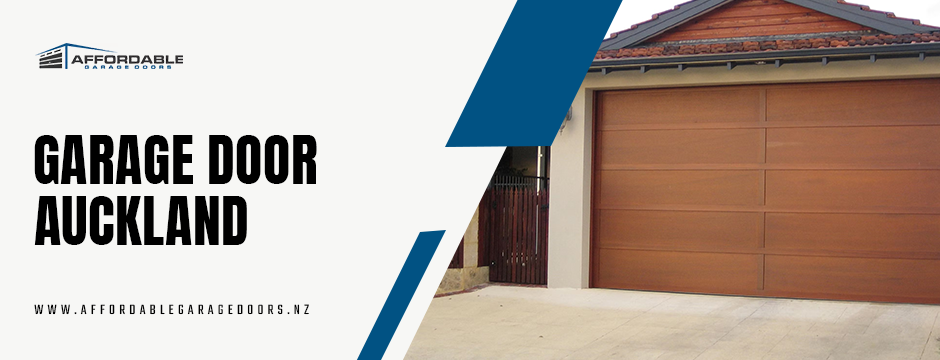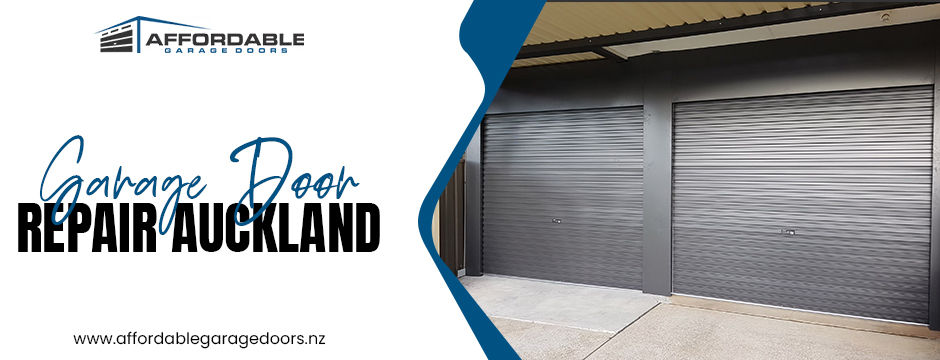The Ultimate Checklist for a Well-Maintained Garage Door in Auckland
- Affordable Garage Doors

- 5 days ago
- 4 min read
For many Kiwi homes, the garage door is used more often than the front door. It provides security, convenience, and protection from the weather, all while contributing to the look of the property. Like any part of the home, though, it requires regular care to stay in top condition. If you have a garage door in Auckland, keeping up with maintenance will ensure it runs smoothly, safely, and lasts for years to come.
This checklist covers the essential steps every homeowner should take to maintain their garage door properly.

1. Start with a Visual Inspection
Take a few minutes each month to look over the door. Check for dents, cracks, rust, or peeling paint. Wooden doors may show swelling or warping, while steel and aluminium doors can develop corrosion if not cared for. These small issues can grow into bigger problems if ignored, so it pays to spot them early.
2. Test the Door’s Balance
An unbalanced door can put unnecessary pressure on the opener and other components. To test it, disconnect the automatic opener and lift the door by hand. If it stays halfway without moving, it’s balanced correctly. If it falls or shoots up, the springs may need adjusting – a job best left to professionals due to the tension involved.
3. Keep Moving Parts Well-Lubricated
Rollers, hinges, tracks, and springs all need lubrication to work smoothly. A silicone-based spray or light machine oil usually does the trick. Regular lubrication reduces noise, minimises wear, and helps extend the life of your garage door. Avoid heavy greases, as these can attract dirt and create build-up.
4. Tighten Loose Bolts and Screws
A garage door can move up and down thousands of times each year. With that level of use, nuts, bolts, and screws can work themselves loose. Check brackets, rollers, and hinges regularly, tightening anything that seems loose. This simple step can prevent unnecessary strain on the system.
5. Check the Auto-Reverse Feature
Modern doors are fitted with safety sensors designed to prevent accidents. Place a solid object, such as a piece of wood, in the door’s path and close it. The door should reverse immediately upon contact. Also, test the photo-eye sensors by waving something in front of them as the door closes. If either test fails, the sensors may need cleaning, realignment, or replacement.
6. Inspect the Weather Seals
The weather seal at the bottom of the door keeps out wind, rain, and pests. Over time, it can crack or lose flexibility, allowing water and draughts into the garage. Replacing a worn seal is inexpensive and can make a big difference to comfort and energy efficiency, especially during damp Auckland winters.
7. Keep the Tracks Clean
Tracks guide the rollers and allow the door to move smoothly. Dirt, dust, or small objects can cause the door to stick or make unusual noises. Wipe the tracks with a damp cloth and check for bends or misalignment. Avoid lubricating the tracks themselves – they need to be clean, not slippery.
8. Listen for Unusual Sounds
A healthy garage door should operate with a consistent, smooth sound. Grinding, squeaking, or banging noises are warning signs that something isn’t right. Often, these noises point to worn rollers, a need for lubrication, or misalignment. Early attention can save on costly repairs down the track.
9. Test Manual Operation
In a power cut, you’ll rely on the manual release to open the door. Pull the release cord and lift the door manually to make sure it moves easily. If it’s difficult to operate by hand, there may be an issue with the springs or cables that needs professional attention.
10. Schedule Professional Servicing
While regular homeowner maintenance is essential, some tasks require expert skills and tools. Spring replacement, cable adjustments, and motor servicing can be dangerous if attempted without training. Having your garage door in Auckland professionally checked once a year ensures it remains safe, reliable, and compliant with local standards.
Seasonal Care in Auckland’s Climate
Auckland’s weather can be tough on garage doors. High humidity, salt air near the coast, and sudden changes in temperature can all affect performance. Here are a few seasonal tips:
Spring: Wash the door to remove mould or pollen build-up.
Summer: Protect finishes from UV damage with paint touch-ups.
Autumn: Clear leaves and debris from tracks and check weather seals.
Winter: Ensure all moving parts are lubricated to avoid stiffness in cold weather.
Why Regular Maintenance Matters
A poorly maintained door is more than just an inconvenience – it can also be a safety risk. Broken springs, faulty sensors, or worn cables can lead to accidents or leave your home vulnerable to intruders.
By following this checklist, you’re not only protecting your investment but also ensuring the safety of your family. A well-maintained garage door in Auckland adds value to your home and provides peace of mind knowing it will work when you need it most.

Reliable Garage Door Solutions You Can Trust
At Affordable Garage Doors, we take pride in delivering prompt, efficient, and affordable services across Auckland. From repairing broken springs and replacing panels to installing a new garage door opener, our experienced team ensures your door operates safely and smoothly. As a family-owned business, we provide genuine Kiwi-friendly service, premium New Zealand-made doors, and extended warranties. With glowing reviews and satisfied clients nationwide, you can count on us for peace of mind and lasting reliability.
Final Thoughts
Looking after a garage door doesn’t have to be complicated. With regular checks, simple maintenance, and the occasional professional service, your door can remain reliable for years. Pay attention to the small details, and you’ll avoid major problems later.
Taking care of your garage door in Auckland is an investment in convenience, security, and the long-term value of your home.




Comments